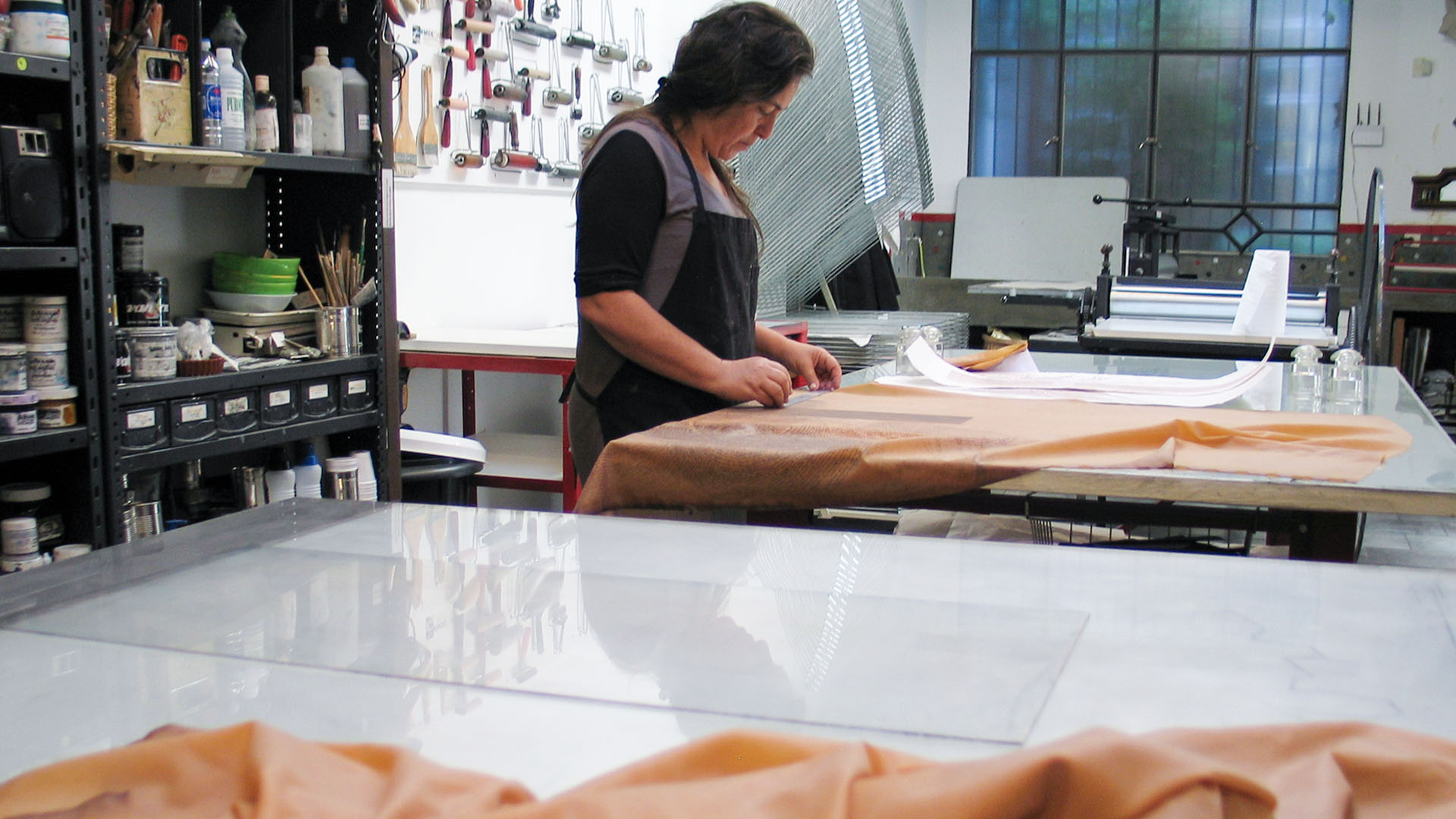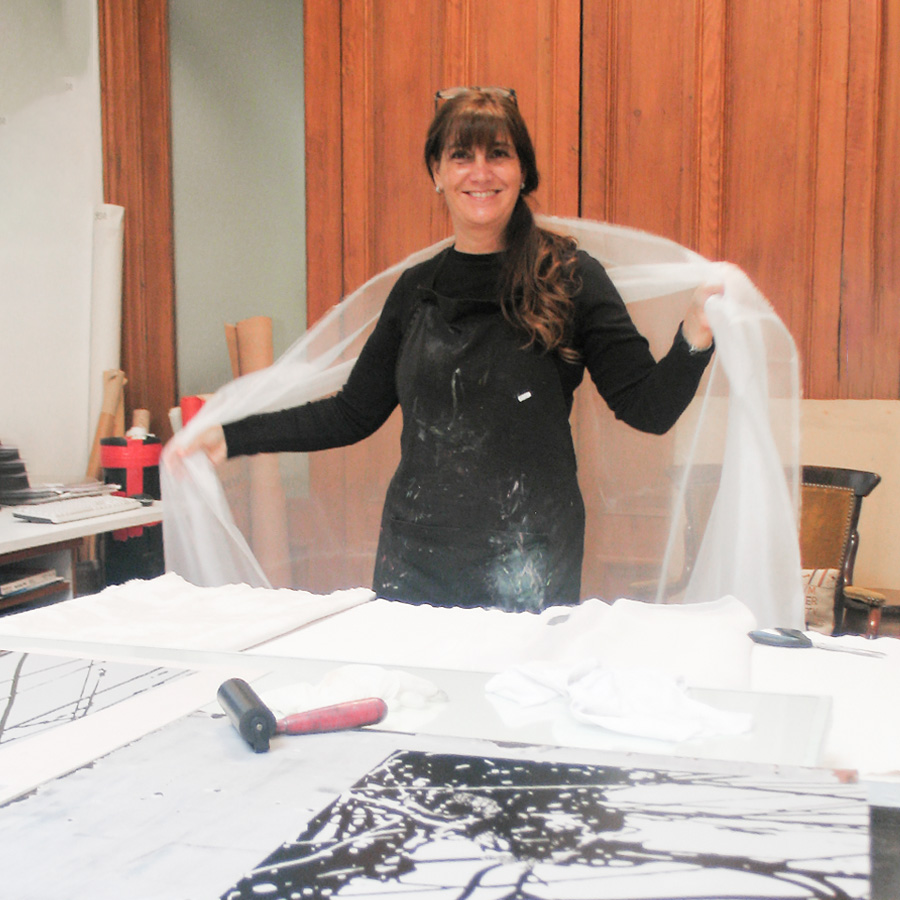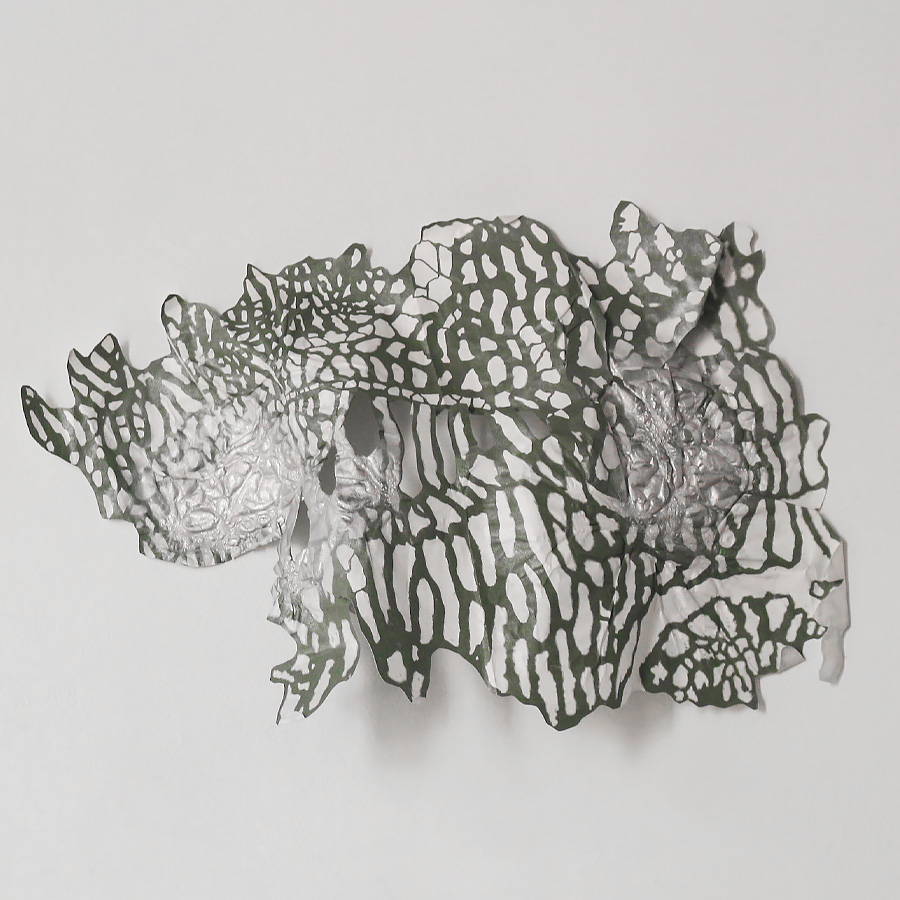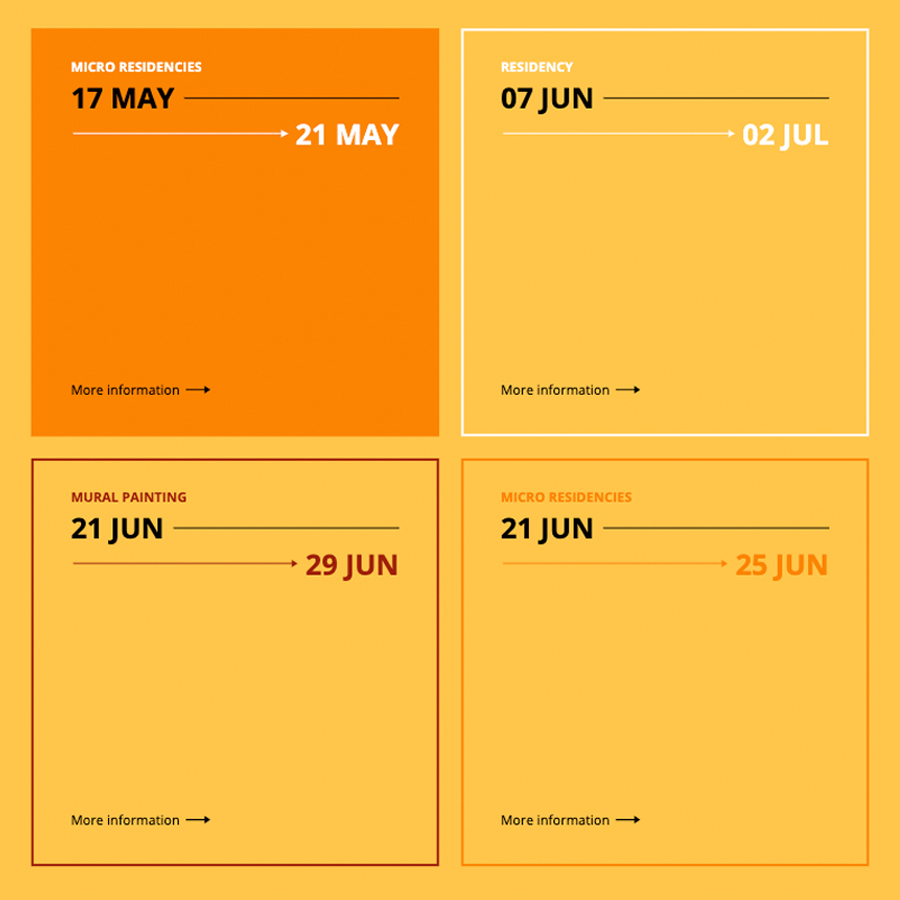Artists
Argentina
Debora Kaufman
Micro-residency-Kaufman
24.06.13 28.06.13
In this micro-residence, Debora explored with Cueroflex as a material and experimented with the technique worked during the Transgraphic workshop. Through this process and the possibilities of the materials, she sought the final result of the work.
The coroflex is a material that is obtained from the agglutination of leather waste. Like the skin, the flex body extends beyond the body and is the support of the entire work. It can be treated in flat or volumetric format in the cases that the series requires.
ARTIST STATEMENT
A naked female body seeks to connect through signs, symbols or graphics and nourish itself with them as if they were the matter they need to liberate or purify themselves. Mixed techniques will be applied to the image obtained in the transfer, evaluating the process, they will be the most appropriate. You can incorporate openwork, cuts or folds, materials such as acrylic, oil pastels, inks, seams, etc. The symbols to be used are ink drawings that are repeated until they form a pattern or are diluted to suggest their presence.
The original idea is to produce several copies of the same image that can later be modified and differentiated with the intervention, making each one of them a part of the series and a work in itself. The production of these works make up a section of an installation that includes a video.
BIO
Debora Kaufman
1963 | Argentina
1988 – 1993 | Lived in Madrid, Spain
She is a visual artist and architect.
Co-founder of MEGAKU Art Group
STUDIES
1994 | collaborates with Consorcio de Arte with Alejandra Laurenzi.
It is part of new collectors programs and unconventional programs in cultural management.
Interdisciplinary training in art, planning and design
1988 to 1993 | Studies at the Círculo de Bellas Artes de Madrid, Gutenberg Foundation, Camunias Foundation
In Bs.As she studied with Juan Doffo.
1987 | Architect, University of Buenos Aires, Argentina




